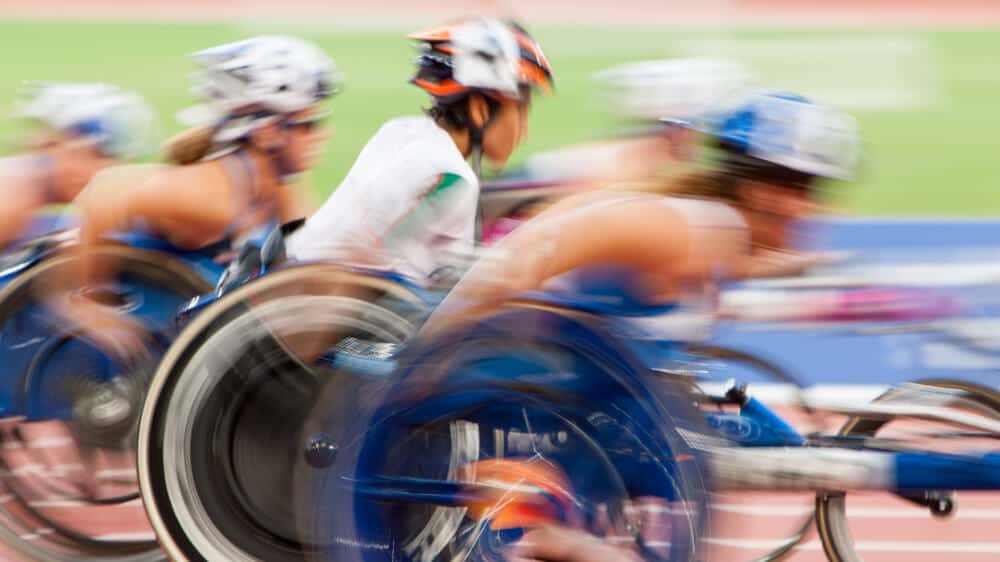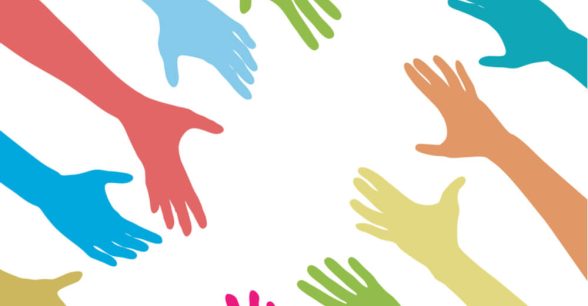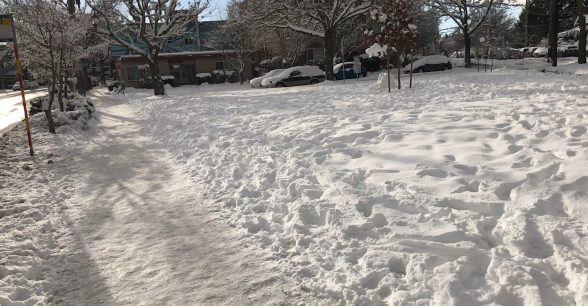Grappling with Ableism in the Para-Sport Movement
Lengthy periods of contemplation don’t usually start with an accessible door opener.
Let’s rewind. I’m a former national team-level athlete in wheelchair basketball and rugby. I was on the long list that the Canadian Paralympic Committee puts together as a contingency plan in case of athlete injury or withdrawal. As one of my coaches used to say, in pure crip humour style, I was “two full plane crashes” from making the 2012 Paralympic roster. In other words, I was a long way from being good enough to make the team, but still close enough to dream.
In my time, I had seen many a wheelchair basketball athlete refer to that little automatic door-opening button as the “lazy button.” Athletes tend to refuse to be seen as needing help, refuse to acknowledge (at least publicly) that self-love and acceptance can come with a little bit of support. Yet I couldn’t recognize that I was perpetuating harm, too, when I performed disability for non-disabled audiences at sporting events and refused to acknowledge that the disabled athlete experience is, often, an exceedingly privileged one. We are often the ones on the posters, singing the praises of overcoming, as if a little bit of basketball cured my brain damage.
Fast forward to 2018. I was part of a dance project with former Paralympian Danielle Peers. One day, I made an offhand comment about the “lazy button” and Danielle called me in, reminding me of the access benefits that this button provides to many who aren’t my “version” of disabled (cerebral palsy—ambulatory, borderline “supercrip” in certain circles). That moment stuck with me. Ableism continues to be something that I and many in the para-sport community are still reckoning with. I spoke with para-sport athletes about this reckoning.
Kelsey LeFevour, a track Paralympian and PhD student currently training for the Tokyo games, reflects on the impulse that many athletes have to resist disability identity altogether. “There are athletes, I think, that kind of want to shed that disability identity, really just lean into the athletic identity without you know, having to give a lot of language to how they acquired their disability, how it affects [them]. Like, ‘talk to me about training, talk to me about competition, talk to me about that part of my story.’ I think at the root of it is wanting to be viewed the way that able bodied athletes are viewed.” It can be exhausting for para-sport athletes to grapple with their own disability in the public eye.
One common frustration that para-sport athletes expressed is how often they are confused for Special Olympians outside of the sporting environment. Often, physically disabled athletes recoil at being associated with Special Olympians, who largely identify as intellectually and developmentally disabled.
LeFevour observes: “I do know that I have watched people almost come unraveled in that sort of experience and, you know, taking personal offense to being called a Special Olympian versus a Paralympian and. . . I think if you unpack that, that certainly does stem from ableist roots, for sure.” These expressions of intra-community ableism are also often internalized by para-sport athletes and the field as a whole.
One way that internalized ableism is perpetuated is through the advertising models used to market the para-sport movement. The narratives of ads like C4’s “We are the Superhumans” reinforce for athletes what those in disability studies call the “supercrip narrative,” the perception that the achievements of athletes with disabilities mean they are overcoming and transcending their disabilities. It’s a view without nuance. Disabled athletes often use this narrative as a shield of sorts, a way to insulate themselves from the more brazen ableism outside the athletic world. And it’s a marketing strategy that annoys Team USA wheelchair basketball athlete Brian Bell, who said the narrative has its uses but doesn’t reflect the true experience of Paralympians.
“I personally is not the biggest fan of it. But, you know, for media sake, and for advertising, you know, it’s not bad because we’re getting more and more coverage, more and more media exposure.”
Bell said his issue is that the marketing creates an artificial divide that perpetuates already existing problems.
“It’s kind of like adding focus to the fact that we are different, I would say. And that’s the thing that we kind of need to go away. Like, yeah, technically we are because we’re, you know, Paralympic athletes are disabled athletes. But the media is more kind of shining a light more towards using that as the main focal point rather than just us being athletes in general.”
The supercrip narrative also creates an assumption among non-disabled people that every disabled person they see in the street must be yearning to go to the Paralympics. But the Paralympics is not a sign-up sheet activity and, more importantly, it’s also radically exclusionary to many with disabilities.
The exclusion happens within the movement, too. Canadian Paralympian Lance Cryderman attended the 2000 games in Sydney to compete in the sport of boccia. He said that while crowds have gotten bigger and the sport has grown, one area he hasn’t seen much growth is in athletes transitioning into coaching and officiating roles.
“I see athletes who have retired from their playing days and they want to make a transition to coaching or to officiating in the sport and there’s a lot of resistance because the idea is, ‘Well, you have cerebral palsy. If you want to become a boccia referee, how are you going to measure? How are you going to do the things you are limited in?”
Cryderman says that when he brought this up at the boccia National Athletes’ Council he was frustrated by the lack of movement toward a resolution.
“I actually said to my counterparts from across the country, ‘Why are we having this discussion? The fact of the matter is, if we leverage technology, you know, that eliminates the barrier. ’ But there is a huge amount of resistance among athletes, as well as other officials, who say that the person with disability cannot function in that role, even though they know the game better than anybody else.”
Perceived lack of ability in a supposedly inclusive environment affected longtime Canada wheelchair rugby team member Byron Green during his early years on the team.
“There was quite an entrenched culture of, if you want to go far in this sport and if you want to reach the national team level, you have to be independent. Like, no ands, ifs, or buts.”
Wheelchair rugby, like all para-sports, has what’s known as a classification code. This medical model-tinged system denotes the functional ability of athletes while playing. In rugby that means a lineup of athletes in a game for any one team is four athletes for a total of eight points. Being able to complete your own personal care is something Green called “a really borderline situation.” Independence, Green says, is a complicated concept when you’re talking about those in his classification—0.5 points, the lowest.
“By asking those athletes to be independent, you’re putting them in danger of injuring themselves. That’s shifted . . . and now the team will cover the costs of a personal care worker to come with the team. And yeah, we’ve shifted our culture to be more accepting and realize that hey, it’s okay if it’s these athletes aren’t independent.”
My desire to not be perceived as lazy by using the door opener stemmed me wanting to perform disability in a digestible way, an overcoming way, a way that would prove my independence. These are feelings that must be continually unpacked if the Paralympic movement wants to achieve the level of equality and equity it holds as its very foundation. It seems funny to talk about progress in para-sport in terms of steps, but the movement is taking a number of steps in the right direction, including paying for personal care workers, acknowledging the variety of the disabled experience, and pushing back ableist mindsets. Now, it’s time for these shifts away from ableism to make it further up the chain of command and spread across the movement.
About Rooted In Rights
Rooted in Rights exists to amplify the perspectives of the disability community. Blog posts and storyteller videos that we publish and content we re-share on social media do not necessarily reflect the opinions or values of Rooted in Rights nor indicate an endorsement of a program or service by Rooted in Rights. We respect and aim to reflect the diversity of opinions and experiences of the disability community. Rooted in Rights seeks to highlight discussions, not direct them. Learn more about Rooted In Rights



